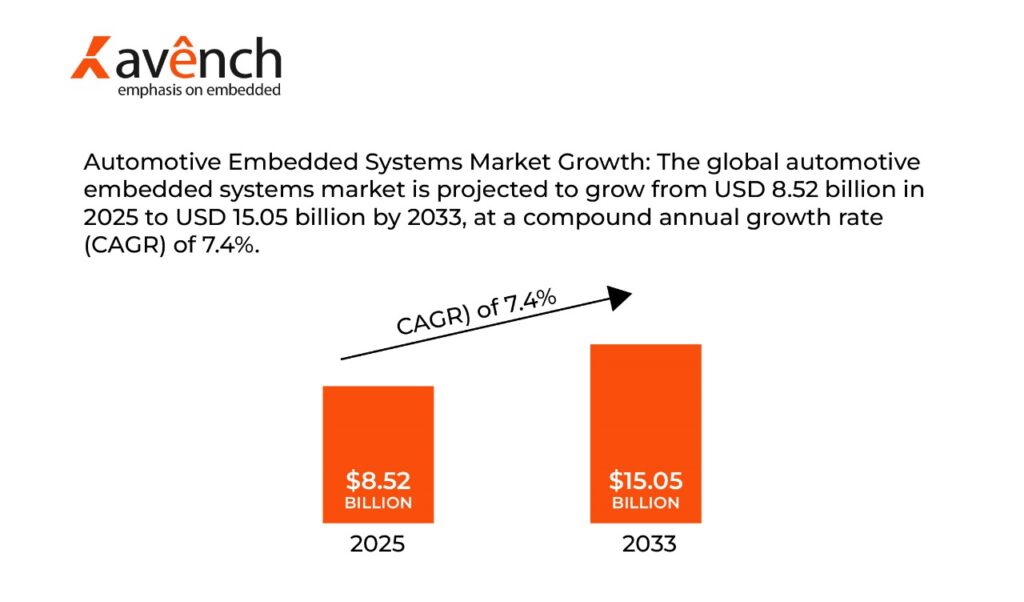Embedded systems development plays a pivotal role in shaping the technological fabric of our lives. These compact, purpose-built computing systems are hidden in plain sight, powering the technologies we rely on every day. From automobiles and wearables to home automation and industrial machinery, embedded systems are the unsung heroes behind innovation.
This blog delves into the vast world of embedded systems, their applications, and the role of key services and technologies in advancing this field. By weaving technical insights with real-life examples, we aim to offer an engaging and informative read for experts in the industry.
Understanding Embedded Systems: The Silent Powerhouses
At their core, embedded systems are a blend of hardware and software designed for a specific task within a larger system. Unlike general-purpose computers, embedded systems are tightly integrated with the equipment they control, focusing on functionality, reliability, and efficiency.
Embedded Systems Development refers to the design and implementation of these core systems. For example, an Anti-lock Braking System (ABS) in cars is a primary embedded system, ensuring safety by preventing wheel lock-up during braking.
On the other hand, secondary embedded systems development involves creating auxiliary systems that enhance or support primary operations. In a smart home setup, a secondary system could be a dashboard app displaying energy usage, while the primary system manages thermostat and lighting controls.
Applications of Embedded Systems Development in Daily Life
Embedded systems have stealthily integrated into various aspects of our lives. Here’s a closer look at some of their transformative applications:
1. Automotive: The Digital Brains of Modern Vehicles
Modern vehicles are marvels of embedded systems engineering. From controlling engine performance to enabling autonomous driving, embedded systems are central to their operation.
Engine Control Units (ECUs): These primary embedded systems monitor and control engine performance, ensuring optimal fuel efficiency and reduced emissions.
Advanced Driver Assistance Systems (ADAS): Secondary systems like lane-keeping assistance, adaptive cruise control, and parking sensors use data from cameras and sensors to improve safety and convenience.
Example: Tesla’s Autopilot relies on advanced embedded systems integrating sensors, machine learning, and real-time data processing to make autonomous driving a reality.

2. Wearables: Health and Fitness at Your Fingertips
Wearable technology exemplifies the marriage of innovation and convenience, with embedded systems at its heart.
Example: Apple Watch uses embedded system development software to optimize its functionalities, including real-time health monitoring and ECG readings, empowering users to manage their health proactively.

3. Consumer Electronics: Making Everyday Life Smarter
Embedded systems have revolutionized home appliances and entertainment devices.
- Smart TVs: Embedded systems enable features like voice commands, app integrations, and AI-powered content recommendations.
- Home Automation: Systems like Amazon Alexa or Google Nest utilize secondary embedded systems to coordinate lighting, security cameras, and climate control, offering seamless smart living experiences.
- Example: Samsung SmartThings integrates multiple embedded systems to create a unified smart home platform.
Embedded Systems Development Services: Bridging Innovation and Reliability
Companies specializing in embedded systems development services offer expertise in designing, prototyping, and deploying these systems. Their roles include:
- Hardware Design and Optimization: Developing compact, energy-efficient systems for specific applications.
- Firmware Development: Writing robust software to ensure reliable hardware performance.
- Testing and Validation: Ensuring compliance with industry standards and safety regulations.
- IoT and Edge Computing Integration: Empowering real-time data processing and remote control capabilities.
In the UK, for instance, embedded systems development companies provide tailored solutions to meet the growing demand for smart technologies in sectors like automotive, healthcare, and industrial automation.
Comparing Leading Embedded System Development Software
When it comes to creating these systems, choosing the right development software is crucial. Two prominent tools stand out:
1. MATLAB and Simulink
MATLAB and Simulink are favored for their modeling and simulation capabilities, particularly in industries requiring precision.
- Strengths:
- Hardware-in-the-loop (HIL) testing for real-world validation
- Extensive libraries for signal processing and control systems
- Ideal for aerospace, automotive, and robotics applications
- Example: Aerospace companies use Simulink to model flight control systems, reducing development time and ensuring safety compliance.
2. Keil µVision
Keil µVision is a go-to development environment for ARM microcontroller projects, offering simplicity and efficiency.
- Strengths:
- Intuitive interface for coding and debugging
- RTOS support for multitasking applications
- Highly suited for healthcare and industrial automation
- Example: Medical device manufacturers use Keil µVision to develop insulin pumps with precise dosage control and fail-safe mechanisms.
Both tools cater to distinct needs, making it essential to align software choices with project requirements.
- Use hardware debuggers like JTAG or SWD for real-time debugging.
- Invest in a debugger compatible with your microcontroller or processor for seamless integration.
Challenges in Embedded Systems Development
Embedded systems development is not without its hurdles:
Scalability Issues: Designing systems that can adapt to future technological demands.
Integration Complexities: Ensuring compatibility with legacy systems and IoT frameworks.
Security Threats: Protecting systems from cyberattacks in connected environments.
Time-to-Market Pressure: Balancing innovation with the need for rapid deployment.
Tips for Successful Embedded Systems Development
Define Clear Objectives: Align system design with operational goals and constraints.
Prioritize Testing: Rigorous testing at every stage ensures reliability and safety.
Adopt Modular Design: Break down systems into modular components for easy updates and scalability.
Focus on Security: Incorporate encryption, secure boot processes, and regular firmware updates
Future Trends in Embedded Systems Development
The evolution of embedded systems is closely tied to advancements in AI, IoT, and edge computing.
- AI Integration: Embedded systems will increasingly feature AI capabilities for predictive maintenance and autonomous operations.
- Energy Efficiency: Low-power designs will dominate, aligning with global sustainability goals.
- Edge Computing: Reducing latency by processing data closer to the source will be a game-changer in applications like autonomous vehicles and industrial IoT.

Conclusion :The Pervasive Power of Embedded Systems
From cars that think for themselves to wearables that keep us healthy, embedded systems are shaping the future of technology. Through a combination of innovative hardware, advanced software, and tailored development services, these systems address critical needs across industries.
Companies offering embedded systems development services and expertise in embedded systems development and secondary-embedded systems development are instrumental in turning ideas into reality. Leveraging tools like MATLAB/Simulink and Keil µVision, developers can create systems that are efficient, scalable, and secure.
The applications of embedded systems are vast, but one thing is clear: they are indispensable in driving the innovations that define modern life.
Avench is one of the leading , embedded systems development in usa to know more information for any sales queries, wait for no further contact us at +1 (775) 404-5757. You can also email us at sales@avench.com, or fill the query form in a website.

